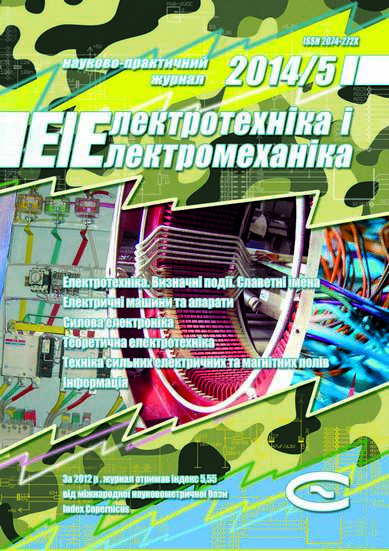RESEARCH ON TRANSIENTS AND CHOICE OF OPTIMUM PARAMETERS OF SWITCHING ELEMENTS FOR AN ELECTROMAGNETIC VALVE CONTROL FOR COMBUSTION ENGINE EXHAUST SAMPLING
DOI:
https://doi.org/10.20998/2074-272X.2014.5.05Keywords:
combustion engine exhaust, electromagnetic valve, oscillatory transitional processAbstract
The article introduces a classical-method-based analysis procedure for transients in the control cascade of an electromagnetic valve for combustion engine exhaust sampling. Analytical expressions for currents and voltage on the cascade basic elements are obtained to allow specifying the optimal parameters of these elements in terms of speed and reliability.
References
Khodasevich A.G., Khodasevich T.I. Spravochnik po ustroistvu i remontu elektronnykh priborov avtomobilei [Reference book on the device and repair of electronic devices of cars]. Moscow, Antelcom Publ., 2004. 244 p.
Tyunin N.A., Rodin A.V. Elektronika v avtomobile [Electronics in the car]. Moscow, Solon-press Publ., 2012. – 128 p.
Neumann L.R., Demirchyan K.S. Teoreticheskie osnovy elektrotekhniki. V 2-kh t. [Theoretical bases of electrical engineering. In 2 vols.]. Leningrad, Energoizdat Publ., 1981. 536 p.
Downloads
Published
How to Cite
Issue
Section
License
Copyright (c) 2015 O. V. Lavrinenko

This work is licensed under a Creative Commons Attribution-NonCommercial 4.0 International License.
Authors who publish with this journal agree to the following terms:
1. Authors retain copyright and grant the journal right of first publication with the work simultaneously licensed under a Creative Commons Attribution License that allows others to share the work with an acknowledgement of the work's authorship and initial publication in this journal.
2. Authors are able to enter into separate, additional contractual arrangements for the non-exclusive distribution of the journal's published version of the work (e.g., post it to an institutional repository or publish it in a book), with an acknowledgement of its initial publication in this journal.
3. Authors are permitted and encouraged to post their work online (e.g., in institutional repositories or on their website) prior to and during the submission process, as it can lead to productive exchanges, as well as earlier and greater citation of published work.





